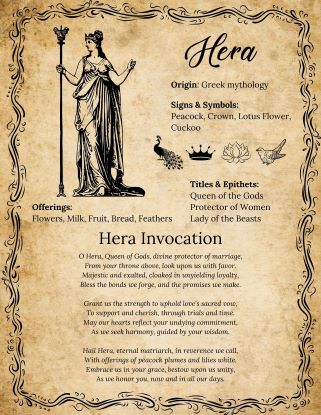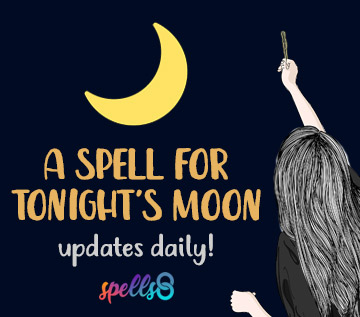She glides across the heavens upon a chariot pulled by golden steeds: a beautifully stoic woman with intense dark eyes. She is the maiden, the mother, the crone, and the goddess of the sky, moon, and stars. Her eyes sparkle as they reflect the heavens around her. Queen of the Gods and Protector of Women, the sight of the goddess brings you a sense of peace.
Wait – this isn’t the Hera you know? Let’s take a step back.
Before she was wed to Zeus and named the matron of the Olympians, her role as the triple goddess was much more multifaceted. Hera was even regarded as a goddess of death and of the moon. (Before the designation of Persephone and Selene, respectively).

Although remembered for her jealousy and even cruelty in mythology, Hera is so much more than that. A goddess of the heavens and the Earth, she is a doting mother and a loyal wife. But what happens when you go beyond the surface of mythology and dive into working with Hera one-on-one?
Who is Hera?
Hera is known as a goddess of women, marriage, childbirth, and fidelity. Her marriage to Zeus cements this role – a relationship that many know as complicated. Although frequently cheated on by her husband, Hera is often viewed as the vengeful, jealous wife, rather than mythology portraying a philandering Zeus as in the wrong.

Today, Hera is considered a less popular goddess by practicing Neopagans. Who bothers to worship the possessive goddess of marriage when the goddess of love is so illustrious and approachable?
Perhaps Hera simply does not appeal to the modern woman. Sure, she represents loyalty and the traditional values of marriage, but she’s admittedly not what you’d call a girl’s girl. Her mythology is fraught with tales of jealousy and contempt, often at the expense of “the other woman”.
But why does Hera hold women accountable and not Zeus?
Understanding Hera
Although her mythology is problematic, it’s imperative to study it to better understand the viewpoint of Hera as a goddess and her struggles as a woman. Let’s take a look at some of her more prominent tales so that you can connect with her more deeply in your practice.
- Mythology of Hera
- Symbols of Hera
- Titles and Epithets of Hera
- How to Worship Hera
- Hera Pagan Invocation
- Further reading
Mythology of Hera
One of Hera’s most famous roles in Greek mythology is that of the jealous wife: one that perpetuates negative stereotypes regarding women to this day. It’s important to remember that these stories were written and subsequently translated by writers upholding an incredibly patriarchal and sometimes misogynistic point of view.
Hera & The Cuckoo
Hera has always been known for her love of animals – but this fact would unfortunately become her weakness. Zeus, enraptured by Hera’s beauty, turned himself into a simple cuckoo bird, sat atop Hera’s scepter, and waited for her to notice. Once she saw the bird, the maiden Hera could not contain herself and wanted to keep him as a pet.

In some stories, Hera spotted the bird shivering in the cold and held him close to her to keep him warm. Once she had held him tight, Zeus transformed back into his godly form, revealing his true self to Hera.
There are varying accounts as to whether Hera was charmed by this display or married Zeus to protect her honor after his deception. Regardless, their marriage would be a rocky one.
The First Peacock
Io, a priestess of Hera, caught the attention of Zeus. As you may know, that was all it took for him to pursue her – despite his marital circumstances. To hide his affair, Zeus transformed Io into a cattle and presented her as an offering to his devoted wife.

Hera assigned the vigilant Argus Panoptes, a creature with a hundred eyes, to guard Io in her disguised form. Zeus’ only option to free his paramore was to call upon Hermes, whom he instructed to slay the Argus.
After Hermes accomplished this task, Hera remained doubtful and placed one of Argus’ eyes on the tailfeather of a bird to keep a close watch over Io, ultimately giving rise to the majestic peacock.
Symbols of Hera
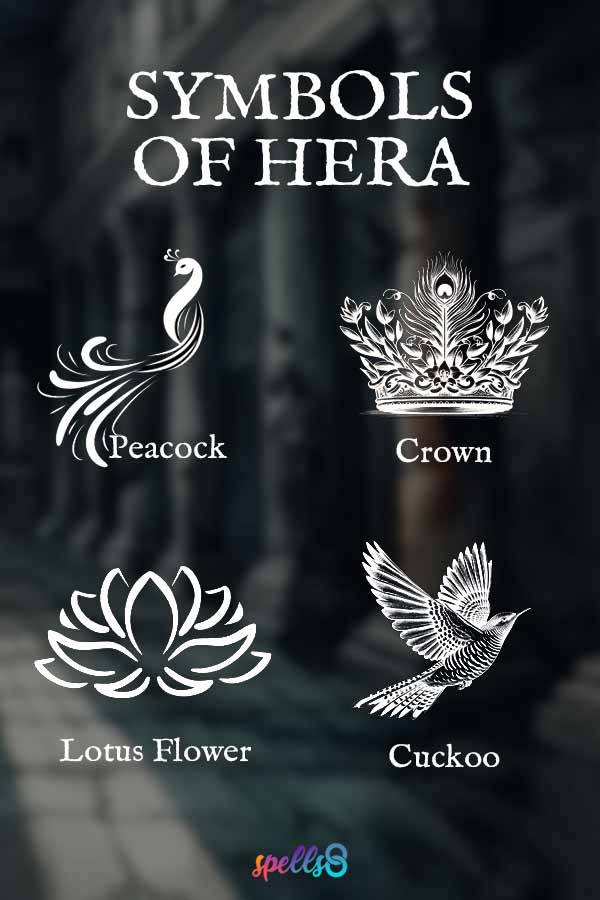
Hera’s Scepter is topped with a Pomegranate, a symbol of fertility, femininity, and death. However, in some myths, her scepter is covered with a Lotus Flower.
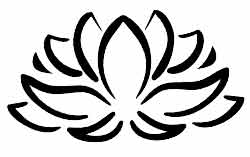
Cuckoo Birds are symbols of Hera in reference to Zeus turning into one to woo her.

The Crown nods to Hera’s prominent position as Queen of the Gods, as she rules Mount Olympus with her husband Zeus.

The Peacock represents the ever-watchful eye of Hera and serves as a reminder for her husband to remain faithful.
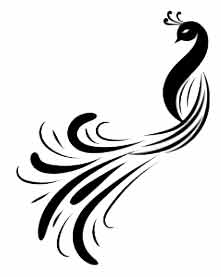
The Cow: Hera’s connection with cows links her to the source of life energy, the basic needs for survival, and the Egyptian cattle goddess Hathor, who is often syncretized with Hera

Hera’s sigil: Besides using these symbols, the Goddess’ influence could be represented by the astronomical glyph for Juno, her Roman counterpart. Juno has an asteroid named after her – 3 Juno. This is its symbol, (⚵) a scepter or a cross topped with a star.

Epithets and Names of Hera
Here’s a short list of the titles and names of Hera:
- Cow-Eyed
- White-Armed
- The Virgin
- Queen of the Gods
- Protectress
- Queen of Heaven
- Protector of Women
- Hera Alexandros – Protector of Men
- Lady of the Beasts
- Of The Golden Sandals
How to Worship Hera
There are many great ways to work with Hera in your practice! While you should always conduct your own research and listen to see how the goddess appeals to you, here are a few ideas to get you started in understanding the magnitude of Hera’s power:
- Hera can bestow the gift of prophecy to whomever she wishes, so invoke her for divination practices or call upon her for divine answers.
- Look to Hera for advice on your marriage and relationships. You can pray to her for guidance or ask for her blessings.
- Hera helped to raise her children so that they could reach their ultimate potential. Seek her out for help or advice in parenting, or call upon her to protect your children.
- Invoke Hera to bless your marriage or handfasting ceremony.

Correspondences and Offerings to Hera
- Hera’s Associations: Marriage, fidelity, childbirth, and inheritance. She is a patroness of women and protector of children and women in childbirth.
- Symbols: Scepter, crown, lotus, and pomegranate.
- Animals: Peacock, cow, cuckoo, snake, lion, hawk, and dragon.
- Gems: Diamond, garnet, morganite, peacock ore, pearl, rainbow fluorite, and rose quartz.
- Colors: Gold, pink, and yellow.
- Genealogy: Daughter of Cronus and Rhea.
Hera Offerings
Your altar is also a great place to leave offerings to Hera. You may want to consider placing an offering bowl, tray, or goblet on your altar with thoughtful choices to present as offerings. Here are a few suggestions for potential offerings:
- Flowers
- Milk
- Fruit (pomegranates)
- Bread
- Wine, alcohol, or juice
- Feathers
- Perfume
- Incense
- Honey
Hera Pagan Invocation
“O Hera, Queen of Gods, divine protector of marriage,
From your throne above, look upon us with favor.
Majestic and exalted, cloaked in unyielding loyalty,
Bless the bonds we forge, and the promises we make.
Grant us the strength to uphold love’s sacred vow,
To support and cherish, through trials and time.
May our hearts reflect your undying commitment,
As we seek harmony, guided by your wisdom.
Hail Hera, eternal matriarch, in reverence we call,
With offerings of peacock plumes and lilies white.
Embrace us in your grace, bestow upon us unity,
As we honor you, now and in all our days.”
Creating an Altar for Hera
A great way to reach out to Hera and connect with her is to build her an altar. An altar is a sacred place to worship and feel closer to your deity. You can decorate it with her favorite colors, candles, crystals, figurines of her sacred animals, or an image or statue of Hera.

Once worshiped as a multifaceted goddess, Hera is just as much a victim of the patriarchy as the everyday woman, her tapestry woven in a time when men penned the most well-recognized stories focused on suppressing a woman’s power.
It almost seems that Hera’s worship was demoted to reinforce a patriarchal viewpoint. Although a diverse and powerful goddess, Hera has since been reduced to a mere jealous wife or motherly figure – an unfortunate archetype that lives on to this day.
Followers of Hera know her in a much different light: a powerful, adoring mother who has overcome betrayal, violence, and adversity. What do you feel when you reach out to her?
Forum Conversations about Hera:
Download the Printable
This PDF version comes with a transparent background so you can print it on any kind of paper you want and add it to your own Book of Shadows. Find more free printable grimoire pages browsing Spells8.
